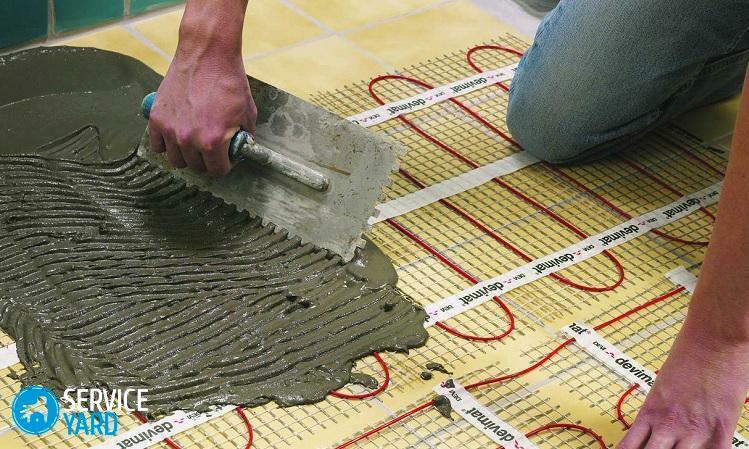Today, we do not hesitate to use in daily use items such as spoons, forks or cups. And it is hard to imagine that our ancestors once did without them. A history of many cutlery and all incredible.
Dessert spoon scoop the size of a little less than the dining room, but more than that of tea.
Content
- 1 A little history
- 2 Varieties of dessert spoons
- 3 The size and volume
- 4 How to choose
- 5 Legends
- 6 VIDEO: The decor dessert spoon with your hands.
A little history
Outwardly resembles spoon spatula with a handle, which is convenient to scoop the liquid or solid food. Some etymologists claim that the name of this instrument comes from the "log" of the root meaning ravine or depression. Others believe that the word "spoon" in tune with the verb "to lick". Whatever it was, the name of the cutlery used in Kievan Rus already in the X century.
It has an elongated handle that is easy to hold with three fingers at once.
If you compare the "age" of a spoon and fork, the first is certainly older. A kind of modern spoons used already in the III century AD. Such devices were made of clay, bone, stone, nut shells or wood. By and large, all that seemingly took the form of shovels and allowed to pick up food, used as a spoon.
Wooden items are very popular with supporters of eco-style.
There have been even cutlery transformers. So up to now reached a fork and scoop attached to it with the grooves on the reverse side. If you insert a plug into the grooves of teeth, it turns spoon.
Interesting fact: in the time of Peter I was accepted to go on a visit with his cutlery. Spoon each had with him. This is probably why there was one more know-how - Foldable spoon.
Etiquette dessert spoon is designed for exquisite dishes.
Use precious metals for the manufacture of kitchen utensils including spoons, it has become in the Middle Ages. The earliest mention of gold and silver spoon refers to the XIII century. Such utensils have been the lot of aristocrats. And those who are content with poorer spoons of tin or copper.
It is used to eat mousse, ice cream, soufflés and other delicacies.
XVIII century brought about changes in the concept of values. new metal was discovered at this time, which today is known as aluminum. Like all newly emerged, aluminum was very expensive. Known fact that during the reception at the palace of Napoleon, the highest-ranking guests were served utensils made of aluminum. Well, less significant for the emperor contented person forks and spoons made of silver or gold. Could Napoleon know that in time will become the lot of aluminum equipment catering?
Aluminum spoon at the most affordable price, but less successful as.
It is worth noting that the usual for us to form - the form of an ellipse - spoon received only in the XVIII century. And if before this device was the only one of its kind, the interest in Chinese culture, tea party provided the impetus for the creation of a teaspoon, and then a little more coffee. And as for tea or coffee is served often something sweet, and had to think about the creation of a special unit for dessert.
In addition, they can be used for the decomposition of food, tasting fruits and berries.
In the Baroque era spoon "experienced" another significant innovation - her grip increased. Probably few people realize that the original handle of this cutlery was very, very small. Spoon held not with two fingers, as it is today, and virtually a handful. And since the onset of the era of Baroque it introduced its "fashion" for luxury frills, ruffles and long, wide sleeves, during meals aristocrats ventured hopelessly ruin their expensive attire.
Beautiful shine, increased resistance to acid medium and long term use favor the exploitation of these attributes.
At the beginning of the XIX century German scientist, doctor E. Geithner opened in Saxony factory for the production of cutlery from an alloy of nickel and zinc. This material looks very much like the silver was relatively cheap, so the demand for such cutlery increased at a tremendous speed. Today this material, we called nickel silver, and he is also popular for its aesthetic appearance and ease of use.
It is correct on a dessert table, if you put the instruments in the plate.
And the come XX, and then the XXI century has introduced the "rationalization" proposal on the materials used for production of kitchen utensils. First there was stainless steel, and then began to make plastic, so-called disposable dishes.
Varieties of dessert spoons
It turns out that the division of the cutlery on the table, dessert and tea - is not the limit. And while everyone knows what it looks like dessert spoon, it is worth considering that for almost every kind of dessert has its own spoon.
- Grapefruit spoon. It has a more elongated shape and pointed little teeth on the edges.
- For avocados. A close relative of the previous one, but without teeth and with a smooth oval shape.
- Dessert spoon kiwi. Scoop in the device has a circular shape.
- Ice cream. Spoon has the shape of the blades and slightly curved edges, not as deep as usual.
- For cold drinks. For example, a spoon for ice cappuccino differs elongated arm (since both the circle in which it is applied, high).
- Liquid honey. Yes, this is the device in the form of a keg with transverse incisions is also considered a dessert spoon, only highly specialized.
- For sugar. In shape is more like a scoop for children playing in the sandbox, rather than on a spoon in the conventional sense.
Important! Dessert spoon is part of a set of the same name, which also includes a dessert knife and fork.
The size and volume
It turns out that the spoon is widely used not only to absorb the various goodies, but also in order to properly prepare these same goodies. In other words, even today, despite the abundance of kitchen gadgets for measuring the weight and volume of the spoon it is still out of competition.
On the size of dessert spoon takes a "middle ground" between dinner and tea. In other words, it is twice as tea and a half times less than the dining room.
Dessert spoon - it is a thing which is not a compulsory subject for serving ordinary table, but that is always at hand.
By volume dessert spoon is placed an average of 10 ml per teaspoonful - 5 ml, and the dining room - 15 ml.
If it is not desirable to use glass, its capacity (200 ml) can measure spoons 40 teaspoons, dessert 20 or 16 canteens.
They must choose correctly, so that they then do not pylis on the shelves.
Of course, there is a difference in how to measure out liquid or granular products, also has a density value of each individual product. Therefore, if we are talking about specific ingredients in order to answer the question, how many grams in a dessert spoon, it is better to find more information about the weight and density.
In most cases, this product sold in a set with other dining facilities, as exhibited on the table only on special occasions.
How to choose
Probably, most of us do not particularly think about the selection criteria of the elementary unit as dessert spoon, but in vain. There are little tricks that not only allow for a long time to operate the cutlery, but also to do it with pleasure and safety.
Buying the set, attention should be paid to the manufacturer, whose name is checked for years.
- Better to choose a manufacturer of cutlery with a proven track record.
- Do not neglect the appearance of cutlery, believe me, it is no less important than technical specifications.
- The metal devices should not be felt metallic characteristic smell, or it is transferred products.
- In places spoons bend (or forks) must be some thickening. On metal surfaces should be no spots or streaks.
- If spoons famous brand has a painting or a distinctive pattern, it means high quality.
- The optimum size dessert spoons: thickness of 1 - 1.5 mm, bucket depth - 10 mm.
Set to be beautiful and elegant products and made of more expensive materials.
Legends
Despite its apparent simplicity, the spoon was the ancestor of many legends, myths and signs.
For example, the University of Cambridge student who received the lowest score in mathematics, awarded spoon in human growth. This tradition existed until 1910. So strange at first glance, the phenomenon has its roots in the old English tradition, to give the spoon to the participant as a consolation prize to the worst result in any competition.
The metal instruments should be absent characteristic odor. Otherwise, he will be transferred products.
Another tradition associated with the exams, took place in Kazan in the XIX century. There was made the night before an exam put all teaspoons in your home under a bookcase. According to students, such an action guarantee successful delivery of session.
In the places of bending a spoon should be slightly thickened.
The famous artist Salvador Dali in general preferred to use a spoon as an alarm clock. When lunchtime his sleepy, he sat down in a chair and holding a spoon in his hand. Falling asleep, he missed a spoon from his hand, and it fell with a clatter to the floor, and the artist awoke.
The presence of the ornament or mural from branded products indicates the presence of a quality certificate.
Known expression "slack" is not figurative. After all thumbs called blanks for spoons. Break the whole piece of wood on the workpiece - the work is not complicated, so the expression was subsequently characterized dalliance.
Normal device must not have a suspicious odor paints, metal or plastic.
Only at first glance dessert spoon it seems to be something mundane and uninteresting. In fact, it is a subject with a rich history. And maybe next time, enjoy an ice cream or a slice of your favorite cake, you will remember some of the facts associated with its origin.
After any medium bowl thoroughly rinse and wipe dry, or spoon darken.



